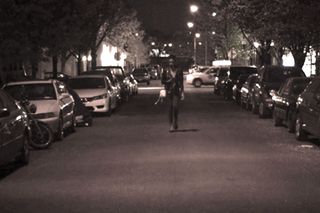
Will the Government’s Women Safe City Project Really Make Women Safe?
It’s a good plan — with one giant flaw.

As part of the newly proposed Women Safe City Project, eight cities, including Mumbai, will receive funding to set up a robust emergency response system to help women. Recently approved by the Home Ministry, the plan will look at installing public panic buttons, smart LED streetlights, deploying all-women police patrol teams, forming one-stop crisis centres and forensic and cyber crime cells.
The project is being executed in consultation with the ministries of women and child development, urban development and electronics and information technology and respective municipal and police commissioners.
The plan, intended for full implementation by 2021, also includes development of safe zone clusters in hot crime zones, CCTV cameras connected to modern command and control centres, increased security in public transport, safer public toilets and temporary housing for at-risk women and children. Police stations will also be equipped with help desks specifically for women, and other services, such as counselors.
There is no denying that the project is a welcome step in tackling women’s safety at a time when crimes against them are up by 34% in the past four years. Some measures — like increased lighting and CCTV in public spaces — are even intended to be preventative, which is refreshing; too often government responses to violence against women have been punitively after-the-fact.
And yet, the plan represents a missed opportunity: sensitizing men and making police forces inclusive and mixed, rather than segregated. And it’s a big miss, because it perpetuates the idea that only women can keep women safe.
Unfortunately, it’s unsurprising. The very entity that is offered to us for our policing and safety is rife with gender discrimination and sexual harassment, making women’s distrust in India’s male police forces understandable. The attrition rate of women in police, especially at the level of constabulary is the highest among all government jobs in the country, thanks in large part to incidents like the following: In 2011, while undergoing a routine medical test some women police recruits were found to be pregnant after being sexually exploited at Kolhapur’s police training school by male counterparts. In 2016, as many as 24 policewomen accused an inspector-level officer in the Delhi police of sexual harassment at the workplace. In 2017, an additional superintendent of police (ASP) of the Madhya Pradesh police was arrested for assaulting a subordinate female police constable.
In a piece for The Wire on why it’s important for India’s police force to become more welcoming for women, Basant Rath, an IPS officer who belongs to the Jammu and Kashmir cadre wrote, “Efforts to address gender discrimination and give a push to gender equity within the police forces will be the harbinger for broader police reforms in policing that can comply with the aspirations and expectations of a developing democratic republic like ours.”
Perhaps, in addition to the measures proposed, the Centre should be asking women: what is it about male officers — who should be the last people to inspire shyness or hesitancy in victims of crime — that makes approaching them uncomfortable? Why do we think an all-female, rather than a mixed, force is necessary to protect women? Without answering these questions, and without including efforts to sensitize men — especially within the police force — toward greater gender-intelligent and -inclusiveness, no plan to keep women safe can be successful.
Anubhuti Matta is an associate editor with The Swaddle. When not at work, she's busy pursuing kathak, reading books on and by women in the Middle East or making dresses out of Indian prints.
Related


In a Post‑377 India, It’s Time to Think Beyond the Binary
